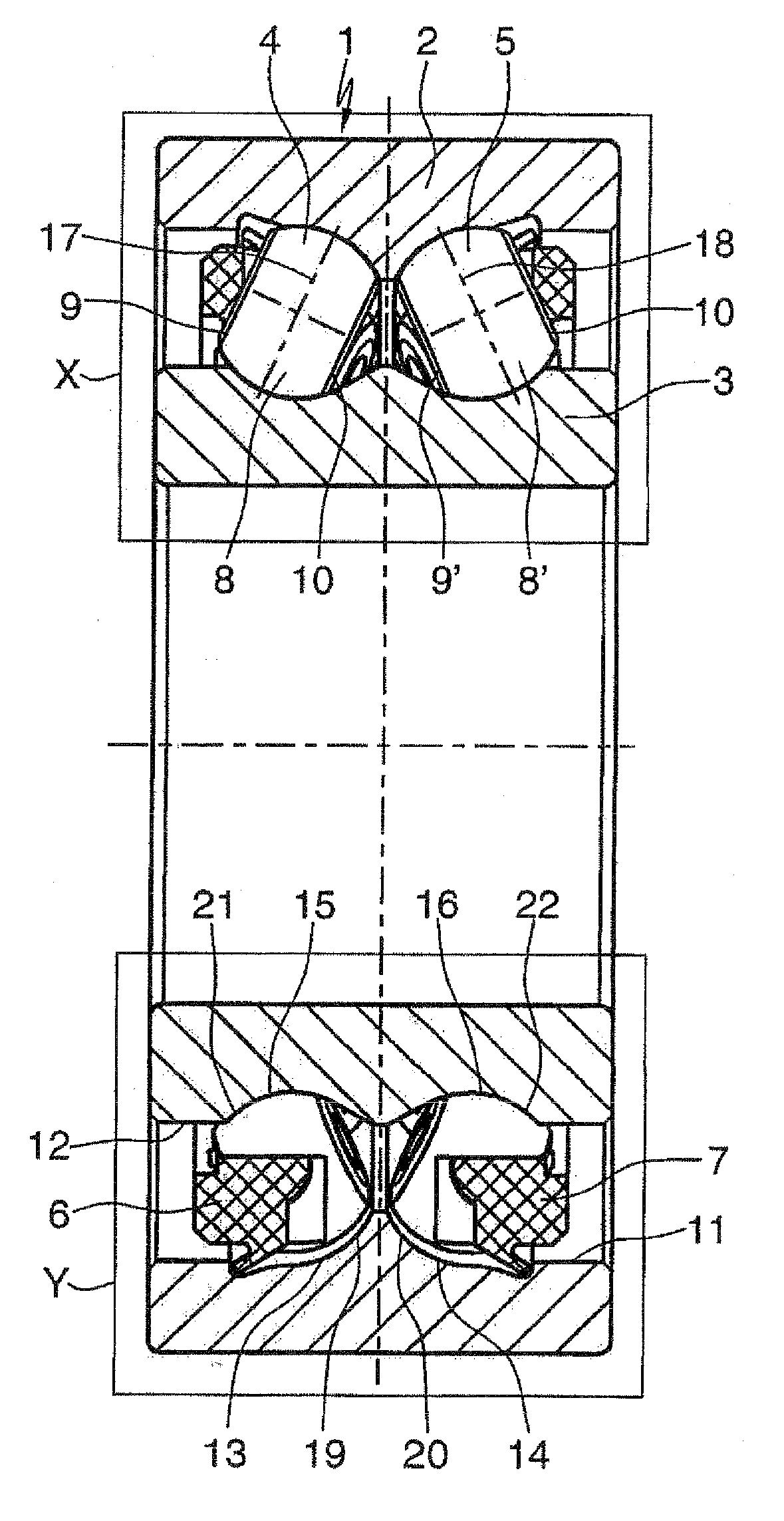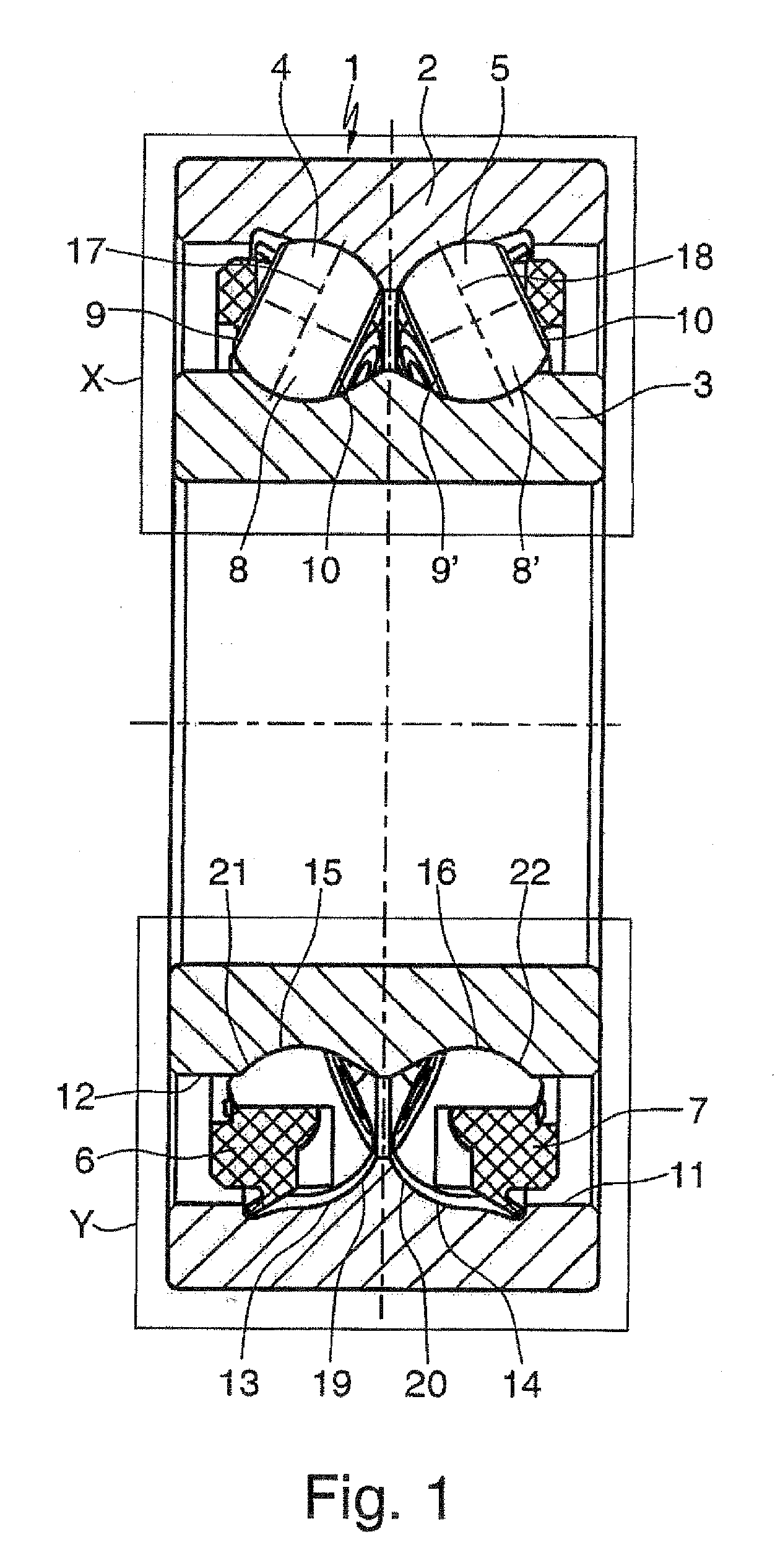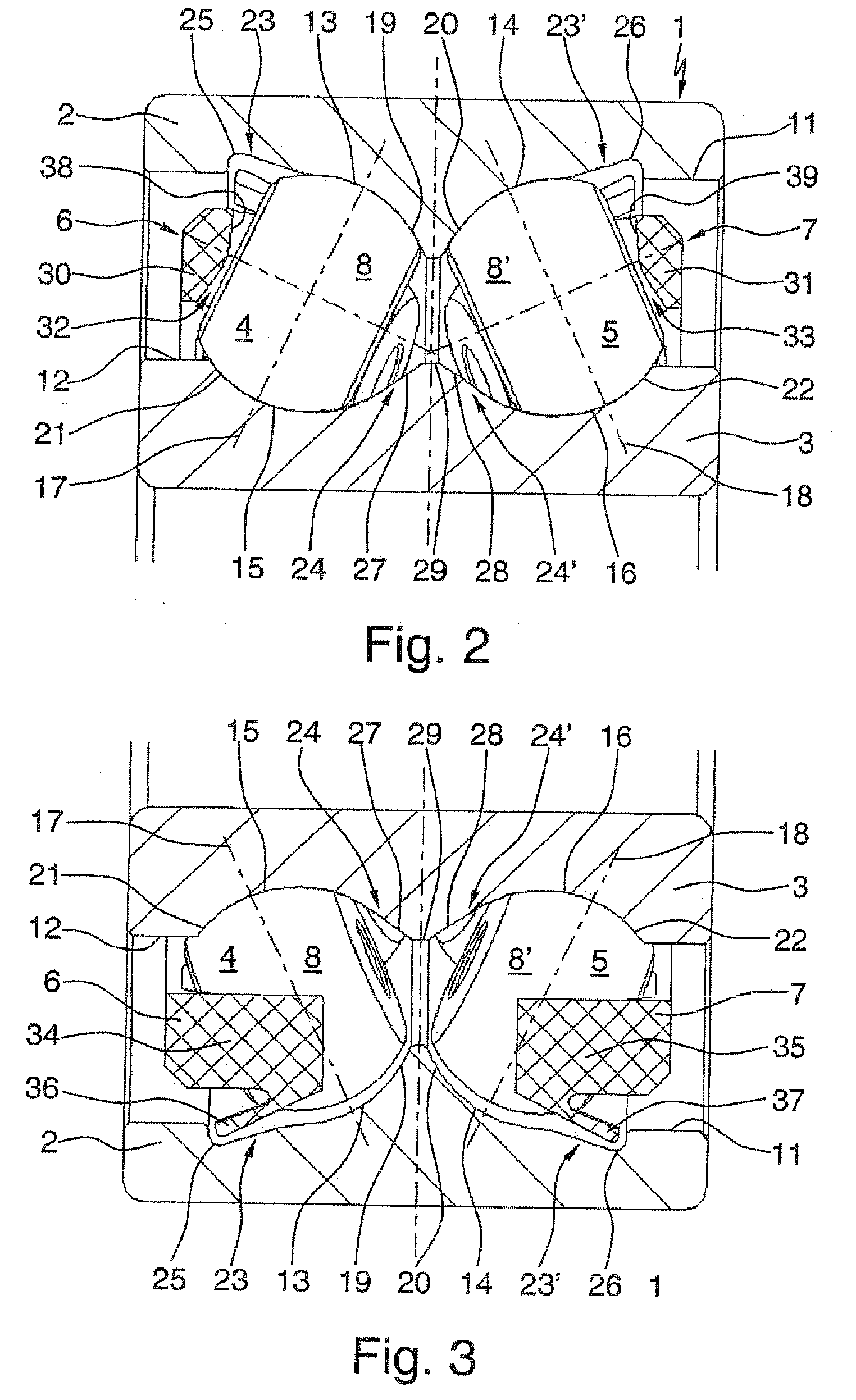[0007]Accordingly, according to claim 2, there is provision in the radial rolling bearing according to the invention that it is preferably embodied as a double-row angular contact rolling bearing with contact angle axes which are positioned in an O arrangement with respect to one another, in which radial rolling bearing both rows of the rolling bodies are embodied as ball rollers and all the raceways in the bearing rings are embodied with additional
free space contours and supporting contours in the region of the edge parts
lying opposite the shoulders of said raceways. As a result, a symmetrical embodiment of the bearing rings is advantageously obtained, which embodiment has a favorable effect on the fabrication costs of said bearing rings. However, it is also possible to fill the angular contact rolling bearing with a row of ball rollers and a row of bearing balls which are then firstly mounted in the inner bearing ring without an outer bearing ring, in order subsequently to fit the outer bearing ring onto the bearing balls and finally insert the ball rollers into the bearing in the described way.
[0008]Starting from the features of claim 2, a further feature of the radial rolling bearing embodied according to the invention as claimed in claim 3, is that annular grooves which, in the outer bearing ring, in each case open into raceways thereof, and are wedge-shaped in cross-section, are arranged as additional
free space contours which are provided in order to bring about the necessary freedom of movement in order to tilt the ball rollers into their operating position in the raceways of the two bearing rings. These wedge-shaped annular grooves are each formed with their wedge face which opens into the raceways in the outer bearing ring extending obliquely with respect to the axial sides of the radial rolling bearing, in the inner side of the outer bearing ring, and each have, together with the adjoining raceway, a somewhat greater length than the
diameter of the ball rollers and a depth which is dependent on the contact angle of the bearing and is proportionally larger as the contact angle increases. The annular grooves which are embodied in such a way therefore provide the necessary
free space in order to avoid the misalignment, described in the prior art, of the ball rollers with their side faces on the inner side of the outer bearing ring when the tilting into their raceways is initiated.
[0009]According to claim 4, the rolling bearing which is embodied according to the invention is also distinguished by the fact that, arranged as an additional supporting contour in the inner bearing ring is a central rim, which is wedge-shaped in cross-section, opens in each case with its wedge faces into the raceways of said bearing ring and is provided for carrying out pivoting guidance during the tilting of the ball rollers into their operating position in the raceways of the two bearing rings. This wedge-shaped central rim is here approximately of the same height as the shoulders on the raceways of the inner bearing ring and has, between its wedge faces, an angle which is dependent on the distance between the raceways in the inner bearing ring. With the aid of a central rim which is embodied in such a way it is therefore possible to prevent the ball rollers from slipping through between the bearing rings in the direction of the raceway
lying respectively opposite in the inner bearing ring, as described in the prior art, and to avoid the renewed misalignment of the ball rollers on the raceway provided for them in the inner bearing ring, as well as to support the ball rollers during the tilting into their raceways on their pivoting path until they have reached their final operating position in the raceways.
[0013]Finally, it is additionally proposed in claim 7 that the base of all the cage pockets in the bearing cages are additionally embodied in a slight roof-shape in order to automatically adapt the rolling bodies, formed as ball rollers, to operationally conditioned fluctuations in the contact angle axes in the circumferential direction. “In a slight roof-shape” is to be understood here as meaning that the base of the cage pockets which is embodied in an oblique fashion and id already adapted to the contact angle of the radial rolling bearing additionally has, in the circumferential direction, a uniform, wedge-shaped elevation in the form of a roof whose slope is approximately 5° to 10° on both sides. As a result it is possible for the ball rollers to adapt themselves automatically in their pockets to contact angle fluctuations between 10° and 20° without the ball rollers snapping out of their cage pockets in the process.
[0014]To summarize, the radial rolling bearing embodied according to the invention therefore has the
advantage over the radial rolling bearings known from the prior art that, as a result of the embodiment with additional free space contours and supporting contours on the raceways of the rolling bodies in the inner bearing ring and in the outer bearing ring, said radial rolling bearing can easily be filled, in the axial mounting procedure, with rolling bodies which are embodied as ball rollers. At the same time, the embodiment of the bearing cages in the two rows of ball rollers as collar snap-action cages with collars which are made extremely narrow at the
pitch circle and with all the cage pockets having a base which is embodied in the form of a roof ensures that the highest possible degree of filling of the angular contact rolling bearing occurs and the ball rollers can be adapted to operationally conditioned fluctuations in the contact angle axes.
 Login to View More
Login to View More  Login to View More
Login to View More 


